August – October, 2012

Keibo Oiwa, long time friend of Planet Drum and fellow collaborator in the original Eco-city movement, returned to Bahia for a short visit. The first time he was here in 1999, Bahia had recently suffered from massive mudslides due to heavy El Niño phenonmenon rains. Keibo was delighted to see how green and full of vegetation the hillsides looked now.
In August, Planet Drum received a grant from Landcare Australia for greenhouse reconstruction. We immediately began purchasing new materials (mostly bamboo) to overhaul the entire greenhouse structure, which was in dire need of repairs. The old, green, plastic roof had completely deteriorated in areas and the bamboo supports were on their last legs.
We decided to discard the green plastic in favor of a more natural materials, so the new roof was made from palm fronds. The walls will be made of smaller bamboo pieces, which will help keep out critters, stray chickens and dogs. Multiple truckloads of bamboo were transported to the greenhouse. Volunteers learned how to split and cut the bamboo into the pieces necessary for construction. The construction will take up to four months because we are working on other aspects of the Revegetation Project at the same time.
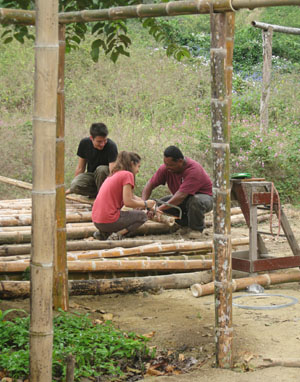

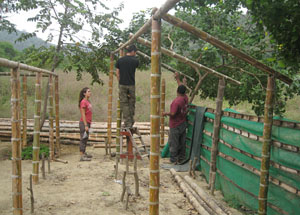
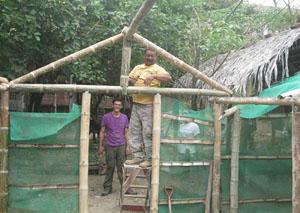

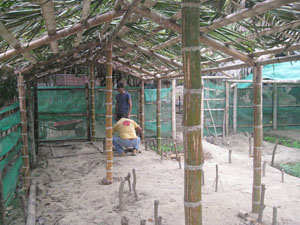
Since it is the dry season (May-December), we have been watering at four revegetation sites which were planted during the past rainy season (Dr. Parra, Universidad Catolica, El Toro, and Bosque en medio de las Ruinas). Sites are watered at least once a month, preferably even more, but watering is very labor intensive and thus our ability to do so on a regular basis depends on the number of hands we have at any given moment. So far the trees at the sites from this year are looking really good and survival rates are high.
At the greenhouse there are several seedbeds (Algarrobo, Guachapeli, Cascol, and Guayaba) with a total of approximately one thousand or more seedlings that need to be transplanted. All of these seedlings need both plastic bottles and pre-mixed soil to be transplanted. There is a lot of work to do at the greenhouse.
For three weeks in August-September, a group of fourteen University of Oregon students along with a professor from the Planning, Public Policy, and Management Department traveled to Bahía to participate in a 3-week, study-abroad program called ‘Building Bioregional Communities.’ The course was a collaboration with Planet Drum staff and the students participated in Planet Drum projects, learned about Bioregionalism and studied Bahia’s bioregion.
Along with field-trips and class discussions, the group got their hands dirty by assisting Planet Drum with field projects. Students learned about the greenhouse and the revegetation process by visiting and working at several sites where we have planted trees.
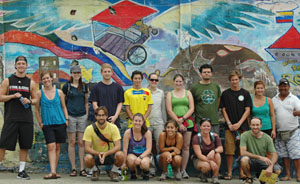
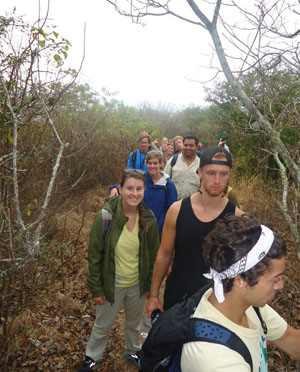
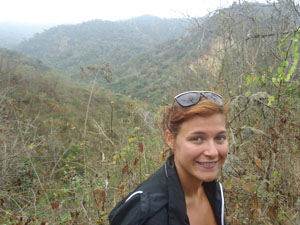



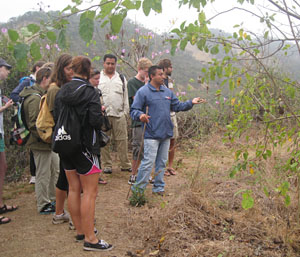
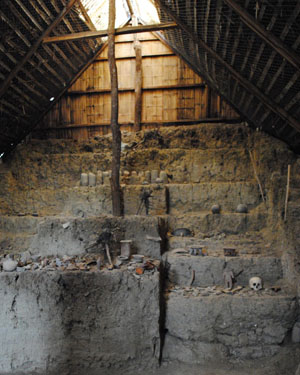
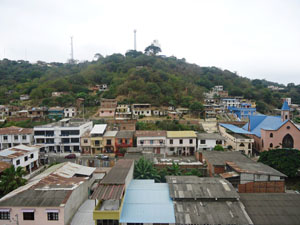


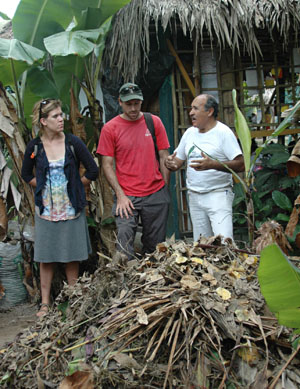
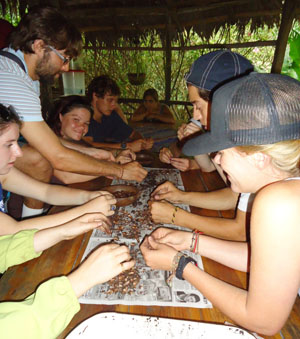

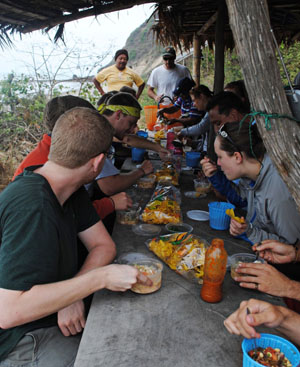
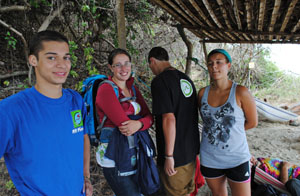
At the greenhouse they helped turn compost, mix soil, cut bottles, transplant hundreds of trees, water and weed. Out in the field, they macheted clear trails and trees at the revegetation sites. They also helped water three of the four sites from this past year. I would estimate that during seven days of working with Planet Drum, the group completed between one and two months’ worth of work due to their high levels of motivation and the sheer number of students.
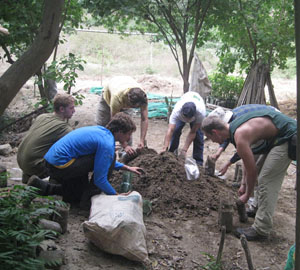
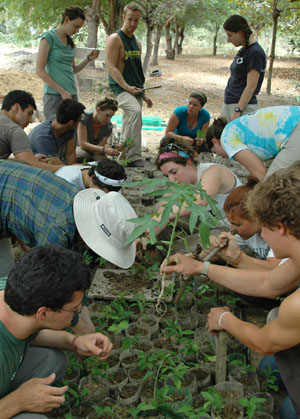
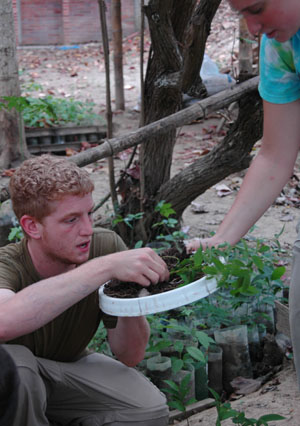
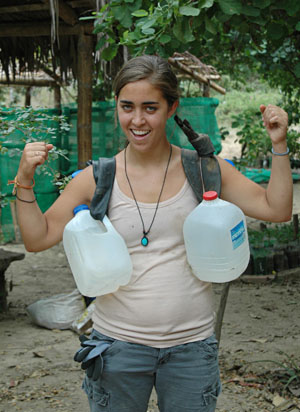
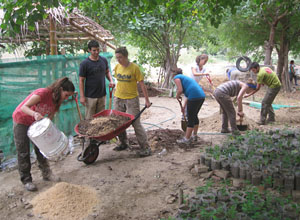
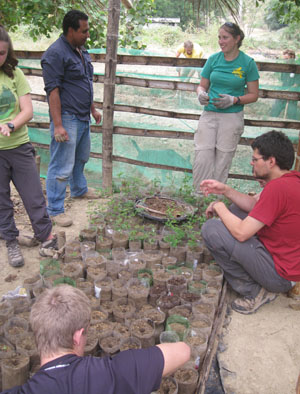
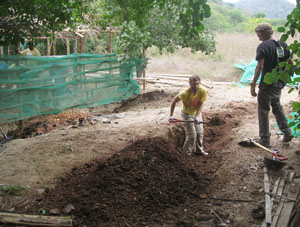
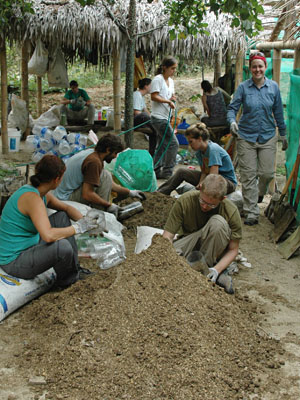
The course was a big success and all of the students had a fantastic time. Plans are already being put into place for another course next year and we are exploring possibilities for expanding to other universities to participate.
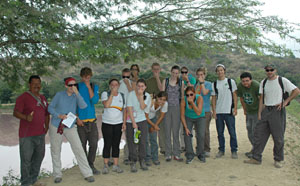
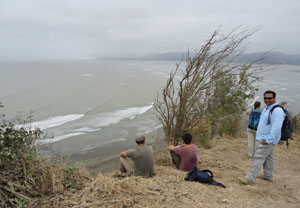
Since the student group left, normal volunteer work has resumed. We continue to water sites, repair the greenhouse, and prepare more materials for transplanting trees. We are currently in the process of organizing two (or more?) different groups of adolescents who will visit the greenhouse and help us transplant seedlings. In preparation, we are collecting bottles, cutting them, and mixing soil. Hopefully this trend can be sustained—groups of students, locals, and others visiting the greenhouse and help transplant. That way, we will be able to increase production at the greenhouse from its current level of approximately 4-5,000 trees annually.
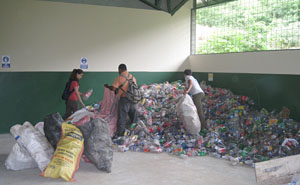
There has been a significant increase in requests for trees from local communities, organizations, and institutions, and the current goal is to match these requests with increased greenhouse production and to lead revegetation workshops when distributing the trees to teach local residents revegetation (and bioregional) practices.
Planet Drum’s first official intern, Hari Khalsa (one of the students who participated in the UO study-abroad program), is working hard on a ‘Dry Tropical Forest Revegetation Manual’ which will be an easily accessible instruction manual for how to revegetate Dry Tropical Forests with native species. The guide will explain how to make a low cost greenhouse, compost, collect and propagate seeds, select sites and plant trees. It will also contain useful information about bioregionalism that is directly applicable to communities and the region. Our plan is to create more strategic alliances with other ecologically minded people/organizations and assist them and the environment by helping revegetate the Dry Tropical Forest and spreading Planet Drum’s bioregional vision at the same time. The Revegetation Project is evolving to another level of productivity and it is exciting to see.
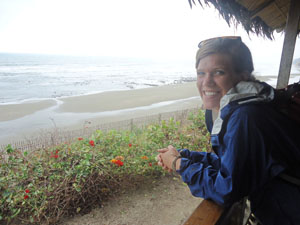
Hari is also helping to create three new internship positions: volunteer coordinator, bioregional community outreach leader, and field researcher. Keep an eye out for more information about these positions.
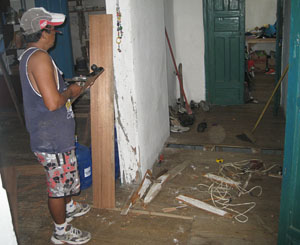
In the upcoming months we will be working hard to wrap up the greenhouse reconstruction, plant more seeds, transplant seedlings, and also begin preparations on new revegetation sites. The volunteer situation, which has been a little slow over the past few months, appears to be picking up and even though the house is filling up, we are always looking for more willing hands. If you’d like to participate in the projects, please visit http://www.planetdrum.org/volunteerbahia.htm
Pásalo bien,
Clay

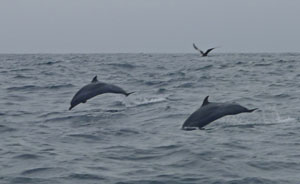

Pásalo bien,
Clay

Reader Interactions